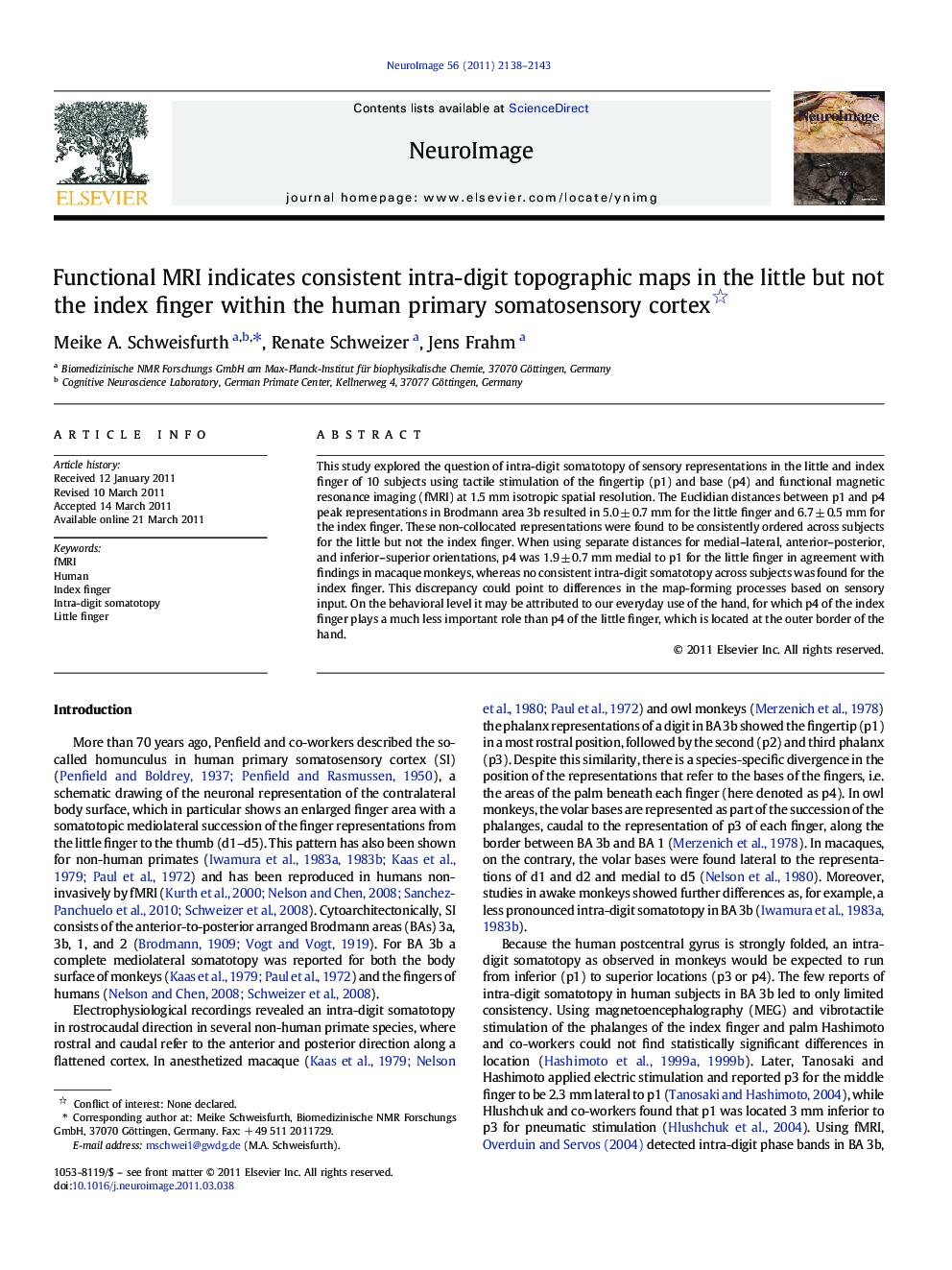| Article ID | Journal | Published Year | Pages | File Type |
|---|---|---|---|---|
| 6035658 | NeuroImage | 2011 | 6 Pages |
This study explored the question of intra-digit somatotopy of sensory representations in the little and index finger of 10 subjects using tactile stimulation of the fingertip (p1) and base (p4) and functional magnetic resonance imaging (fMRI) at 1.5 mm isotropic spatial resolution. The Euclidian distances between p1 and p4 peak representations in Brodmann area 3b resulted in 5.0 ± 0.7 mm for the little finger and 6.7 ± 0.5 mm for the index finger. These non-collocated representations were found to be consistently ordered across subjects for the little but not the index finger. When using separate distances for medial-lateral, anterior-posterior, and inferior-superior orientations, p4 was 1.9 ± 0.7 mm medial to p1 for the little finger in agreement with findings in macaque monkeys, whereas no consistent intra-digit somatotopy across subjects was found for the index finger. This discrepancy could point to differences in the map-forming processes based on sensory input. On the behavioral level it may be attributed to our everyday use of the hand, for which p4 of the index finger plays a much less important role than p4 of the little finger, which is located at the outer border of the hand.
⺠Significant mediolateral intra-digit somatotopy for the little finger. ⺠Significant separation of cortical representations for fingertip and base in BA 3b. ⺠Individual organization of the intra-digit topographic map for the index finger.
